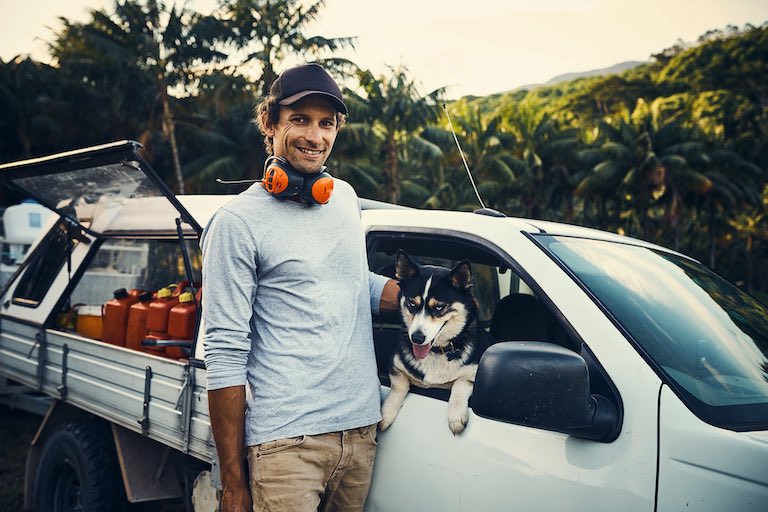



Isuzu D-MAX 2017 Review
Can Isuzu's updated D-MAX cut it against a swathe of new and increasingly sophisticated competitors?Isuzu's D-MAX may be one of the oldest platforms here, its last generational change coming in 2012, but the Japanese brand has kept the updates flowing and maintains market competitiveness.
That last update occurred at the beginning of 2017, when the D-MAX received a heavily reworked engine and driveline, in addition to a number of technology updates.
Our D-MAX for this major comparison was a 'special edition' LS-Terrain, the highest trim grade which sits ahead of the SX, EX, LS-M and LS-U models, as well as the X-Runner special-edition variants.

The D-MAX is available in 4x2 and 4x4 drivelines, a choice of single, space or double cabs and in either a cab/chassis or pickup format.
Encouragingly for Isuzu – a two-model brand in Australia – the D-MAX has secured a reputation as a capable and no-fuss workhorse. It's a vehicle that gets the job done, albeit without some of the creature comforts and features to be found in some rivals.
While a reversing camera and three USB charging ports are now standard in all LS grades, and touchscreen multimedia units are now found throughout the range, when stacked against these rivals, the D-MAX's cab still has very much a utilitarian feel. There's little to break up the dark grey plastic save for a little chrome trim, although the panel fit is good and the gap tolerances are low.
Underway, the D-MAX's 3.0-litre four-cylinder turbo-diesel is a willing powerplant, now producing 130kW and 430Nm. That's 50Nm more than its predecessor, and, behind the wheel, the extra torque is quickly apparent.
It's still a lazy and under-stressed unit with a strong truck heritage; a version of this engine is still found in Isuzu Australia Limited's top-selling N-Series light-duty truck.
The effortless grunt ensures excellent load-lugging ability and off-road potential, while the momentary pause as the turbo spools up from idle isn't too intrusive.

From 2000rpm, the D-MAX offers clean response and a broad band of useable torque that extends to 4000rpm and beyond.
The rear leaf springs make for a firm ride without a load but, with a bit of weight on board, the D-MAX settles nicely. With our 500kg test load in the tub, the D-MAX's suspension hit the rear bump stops a couple of times over high speeds bumps and dips, but generally it handled our test route well.
The low-revving nature of the engine was particularly appreciated on the off-road section – Isuzu D-MAX soaked up the axle articulation test without a worry, and at little more than idle.

For off-road performance there's a dual-range transfer case but, unlike some rivals, the D-MAX has no locking diffs. The sidesteps appear a little less robust than some – the D-MAX was the only model to exit the off-road section with a dented sidestep.
Life on the road is made easier by the excellent reversing camera display, cruise control, the new sweet-shifting six-speed Aisin automatic transmission, a comprehensive trip computer and the easy-to-use multimedia system (with the usual array of inputs).
The D-MAX comes to this comparison as a keenly priced vehicle with many strengths. Those from a commercial background will admire its engine, its capability and its rugged appeal, while those from a passenger-car background may baulk at its somewhat Spartan cabin when compared with many of its rivals.

2017 Isuzu D-MAX LS-Terrain Crew 4x4 pricing and specifications:
Price: from $54,200 (plus on-road costs)
Engine: 3.0-litre four-cylinder turbo-diesel
Output: 130kW/430Nm
Transmission: Six-speed automatic
Fuel: 7.9L/100km (ADR Combined) / 11.2L/100km (as tested)
CO2: 209g/km (ADR Combined)
Safety Rating: Five-star ANCAP
2017 Isuzu D-MAX LS-Terrain payload, towing and tray dimensions:
Payload: 924kg
Tie-down points: Four
GVM/GCW: 2950kg / 5950kg
Vehicle weight: 1970kg (tare) / 2026kg (kerb)
Towing capacity: 750kg (unbraked) / 3500kg (braked)
Tray dimensions: 1430mm (L) x 1530mm (W) x 480mm (H); 1090mm b/w wheel arches
2017 Isuzu D-MAX LS-Terrain off-road geometry, wading and clearance:
Ground clearance: 235mm
Wading Depth: 600mm
Approach Angle: 30.0 degrees
Break-over Angle: 22.4 degrees
Departure Angle: 22.7 degrees
2017 4WD Dual-Cab Ute contents:
>>
>>


Please see our Editorial Guidelines & Code of Ethics (including for more information about sponsored content and paid events). The information published on this website is of a general nature only and doesn’t consider your particular circumstances or needs.

























